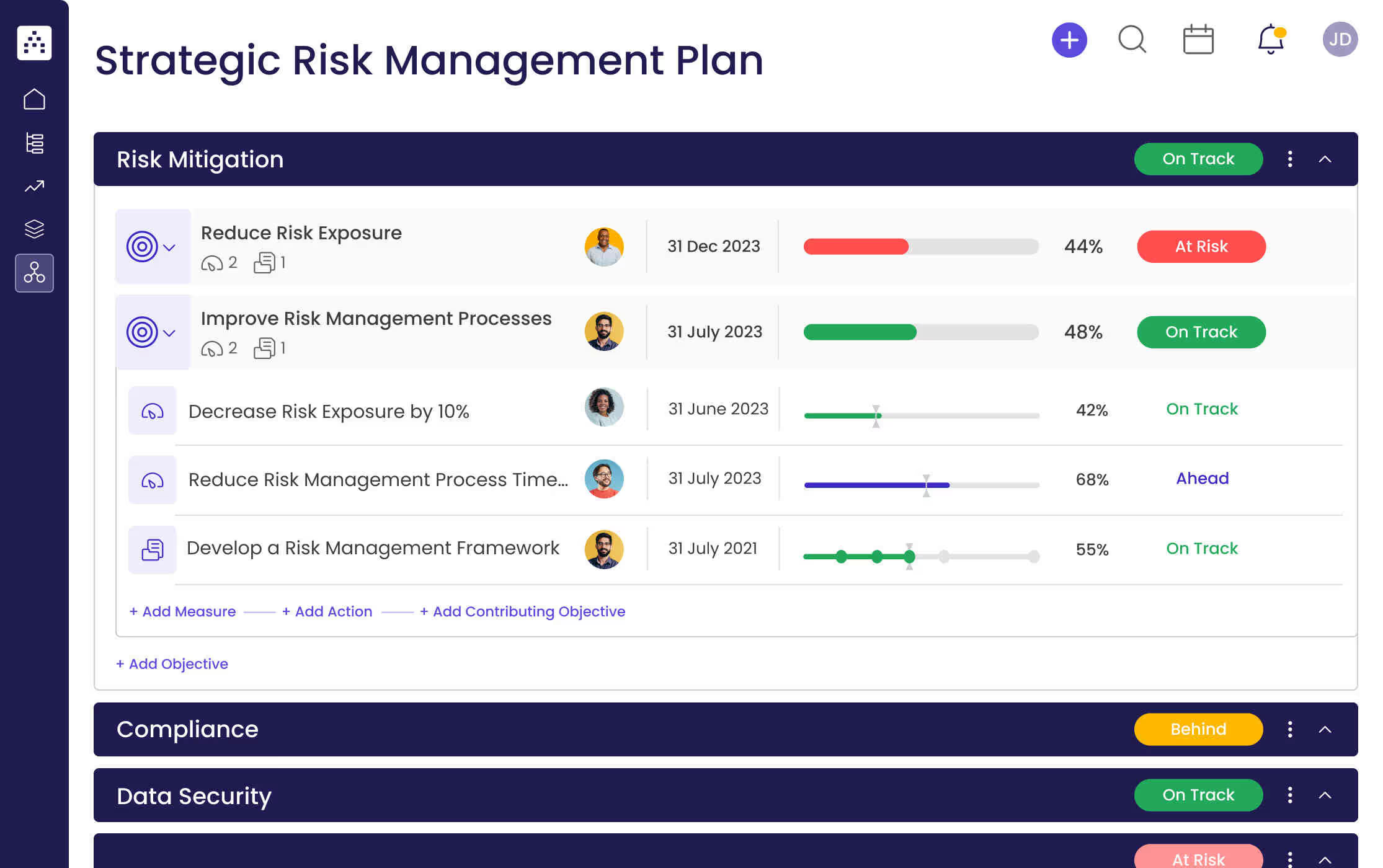What is Strategic Risk Management?
Strategic Risk Management is a process that helps organizations identify, assess, and mitigate risks that could impact the achievement of strategic objectives. It involves a systematic approach to managing risks by evaluating potential risks and developing strategies to reduce the likelihood of them occurring. The goal of Strategic Risk Management is to ensure that the organization is adequately prepared for any risk that may come its way.
What's included in this Strategic Risk Management template?
- 3 focus areas
- 6 objectives
- 6 projects
- 6 KPIs
Each focus area has its own objectives, projects, and KPIs to ensure that the strategy is comprehensive and effective.
Who is the Strategic Risk Management template for?
This Strategic Risk Management template is designed for risk management teams and leaders who are looking to create strategies for identifying, assessing, and mitigating risks that could impact the achievement of strategic objectives. With this template, you can easily define your focus areas, set measurable targets (KPIs), implement related projects, and track progress.
1. Define clear examples of your focus areas
The first step in creating a Strategic Risk Management plan is to define your focus areas, which are the broad categories of risk that you want to focus on. Examples of focus areas could include risk mitigation, compliance, or data security. Once you have identified your focus areas, you can move on to the next step.
2. Think about the objectives that could fall under that focus area
For each focus area, you need to think about the objectives that could fall under that focus area. Objectives are specific goals that you want to achieve for each focus area. Examples of some objectives for the focus area of Risk Mitigation could be: Reduce Risk Exposure, and Improve Risk Management Processes.
3. Set measurable targets (KPIs) to tackle the objective
Once you have identified your objectives, you need to set measurable targets (KPIs) to help you track progress towards achieving those objectives. KPIs are measurable indicators of success that you can use to measure progress toward an objective. An example of a KPI for the focus area of Risk Mitigation could be: Decrease Risk Exposure by 10%.
4. Implement related projects to achieve the KPIs
Once you have set your KPIs, you need to implement related projects to help you achieve those KPIs. Projects are specific actions that you can take to help you reach your objectives. An example of a project related to Risk Mitigation could be: Develop a Risk Management Framework.
5. Utilize Cascade Strategy Execution Platform to see faster results from your strategy
To ensure that your Strategic Risk Management plan is successful, you should utilize Cascade Strategy Execution Platform. This platform provides an easy-to-use interface that allows you to track progress towards your objectives and KPIs, and provides insights into what is working and what needs to be improved.


